-
Dutch test-levee experiment helps strengthen U.S. levees, dams
In the United States, the national flood-control infrastructure is aging and its structural health is deteriorating; the system comprises more than 5,600 km of levees, and 43 percent of the U.S. population lives in counties with levees designed to provide some level of protection from flooding; some of these levees are as old as 150 years; in 2009, the American Society of Civil Engineers Report Card for America’s Infrastructure gave the condition of the nation’s dams a grade of D, and levees a grade of D-minus; an dam-strength experiment in the Netherland helps engineers collect data to validate new suite of technologies for assessing the health of levees and dams
-
-
New York unprepared for flooding, sea level rise
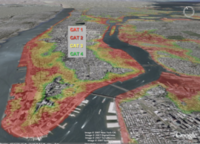
New York City may be a fast paced city of bright lights, sleek attitudes, fashion trends, and some of the best sports teams in the country, but underneath the glitz and glamour is a city which is not prepared for an act of God and which is being threatened by rising sea levels and severe storm flooding; “It’s a million small changes that need to happen,” one expert says
-
-
Seventy-four nuclear reactors in tsunami-risk areas
Researchers have, for the first time, identified those nuclear power plants which are more vulnerable to suffering the effects of a tsunami; in total, twenty-three plants, in which there are seventy-four active nuclear reactors, are located in dangerous areas in east and southeast of Asia
-
-
Seventy-four nuclear reactors in tsunami-risk areas
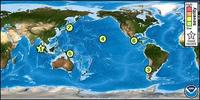
Researchers have, for the first time, identified those nuclear power plants which are more vulnerable to suffering the effects of a tsunami; in total, twenty-three plants, in which there are seventy-four active nuclear reactors, are located in dangerous areas in east and southeast of Asia
-
-
New law aims to make Istanbul earthquake-safe, but it has its critics
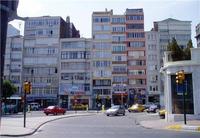
Estimates of Istanbul’s population range from twelve and nineteen million people, a significant increase from two million people fiftyyears ago; during the waves of migration to Istanbul during the 1960s,1970s, and 1980s, the government gave citizens free permitsto add to their homes, which resulted in single-story residents becoming 4-or 5-story buildings on unstable foundations; Istanbul sits only thirteen miles north of the North Anatolian Fault, the intersection of the Eurasian and Anatolian plates, and has been subject to devastating earthquakes; new, controversial law aims to make Istanbul’s buildings earthquake-safe
-
-
U.S. models underestimates costs of carbon pollution
Model used by government all but ignores economic damages that climate change will inflict on future generations; two economists argue that when these costs are factored in, the real benefits of carbon reduction range from 2.6 to more than 12 times higher than the government’s estimate
-
-
Wildfires have both positive and negative economic impacts
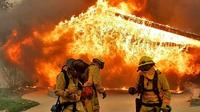
Wildfires disrupt the lives of workers, employers, and families, and lead to longer-term instability in local labor markets, but on the flip side of the coin, countywide employment and wages increase in some sectors during the wildfires, often mitigating the short-term employment disruptions wildfires cause
-
-
Verizon’s all-hazard approach to disaster preparation
September is National Preparedness Month in the United States, but Verizon saysits Business Continuity and Emergency Management teams are busy every day of the year monitoring, preparing, and responding to weather-related and man-made events throughout the world; there are 193 member states in the UN, and the company’s BCEM teams are operating in 150 of them and in more than 2,700 cities
-
-
Regional, global food security effects of climate change to felt soon
Research shows that within the next ten years large parts of Asia can expect increased risk of more severe droughts, which will impact regional and possibly even global food security; on average, across Asia, droughts lasting longer than three months will be more than twice as severe in terms of their soil moisture deficit compared to the 1990-2005 period; China, Pakistan, and Turkey as the most seriously affected major producers of wheat and maize
-
-
Himalayan glaciers retreating at an uneven rate, making South Asia water supply future unclear

MI6, the U.K. intelligence service, four years ago predicted that the world’s first water war – that is, war between countries over access to water resources — will take place between India and Bangladesh sometime between 2015 and 2020; the reason for the war: intensifying conflicts over dwindling Himalayas water sources; glaciers in the eastern and central regions of the Himalayas appear to be retreating at accelerating rates, similar to those in other areas of the world, while glaciers in the western Himalayas are more stable and could be growing, a new report says
-
-
More accurate method for predicting hurricane activity devised
Researchers have developed a new method for forecasting seasonal hurricane activity that is 15 percent more accurate than previous techniques; the new approach should give policymakers more reliable information than current state-of-the-art methods
-
-
Hurricane Isaac tests Loyola University's emergency response plans
In the days following Hurricane Isaac’s slow march across south Louisiana, Loyola University New Orleans administrators have been reviewing their response with a critical eye to ensure emergency preparations continue to evolve and meet the demands of each situation; beginning Tuesday, 28 August, New Orleans felt the first of Isaac’s high winds and heavy rains – but Loyola University was ready
-
-
New search-and-rescue tool: remotely controlled cockroaches
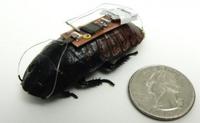
Researchers have developed a technique that uses an electronic interface to remotely control, or steer, cockroaches; remotely controlling cockroaches would allow first responders to create a mobile web of smart sensors that uses cockroaches to collect and transmit information, such as finding survivors in a building that has been destroyed by an earthquake
-
-
Protecting buildings from earthquakes by hiding them
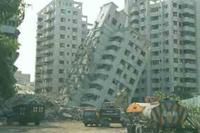
Engineers have come up with an inventive and exciting idea for protecting buildings from earthquakes: hide them (the buildings, that is); the engineers say that placing specialized rubber under the building would diverts certain temblor shock waves, leaving the building virtually untouched by them
-
-
Scientists question earthquake prediction methods
From 2008 to 2011, three earthquakes have significantly damaged different parts of the world. Those quakes were significantly underestimated by scientists and seismologists
-
More headlines
The long view
Using Drone Swarms to Fight Forest Fires
Forest fires are becoming increasingly catastrophic across the world, accelerated by climate change. Researchers are using multiple swarms of drones to tackle natural disasters like forest fires.
How Climate Change Will Affect Conflict and U.S. Military Operations
“People talk about climate change as a threat multiplier,” said Karen Sudkamp, an associate director of the Infrastructure, Immigration, and Security Operations Program within the RAND Homeland Security Research Division. “But at what point do we need to start talking about the threat multiplier actually becoming a significant threat all its own?”
